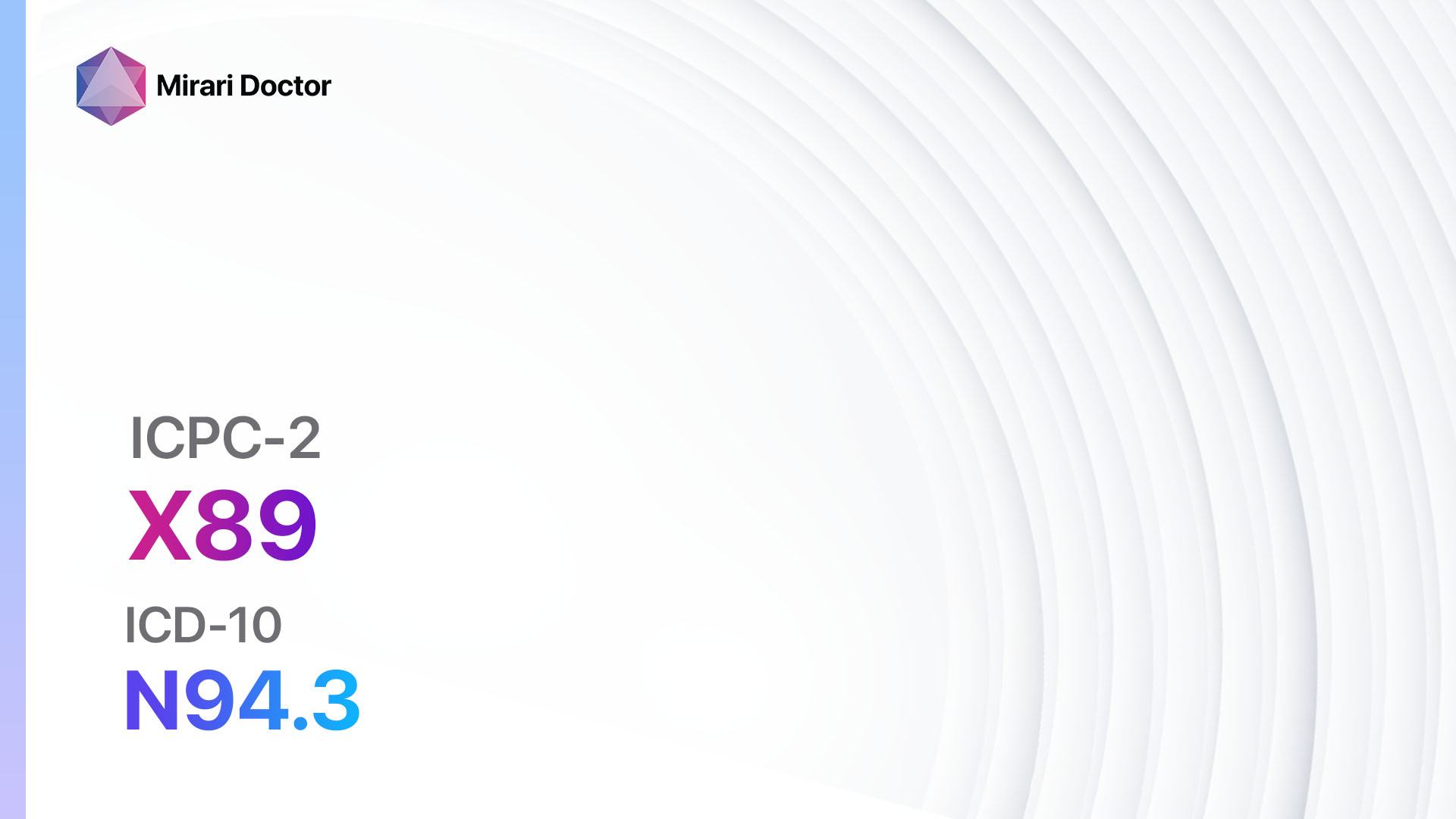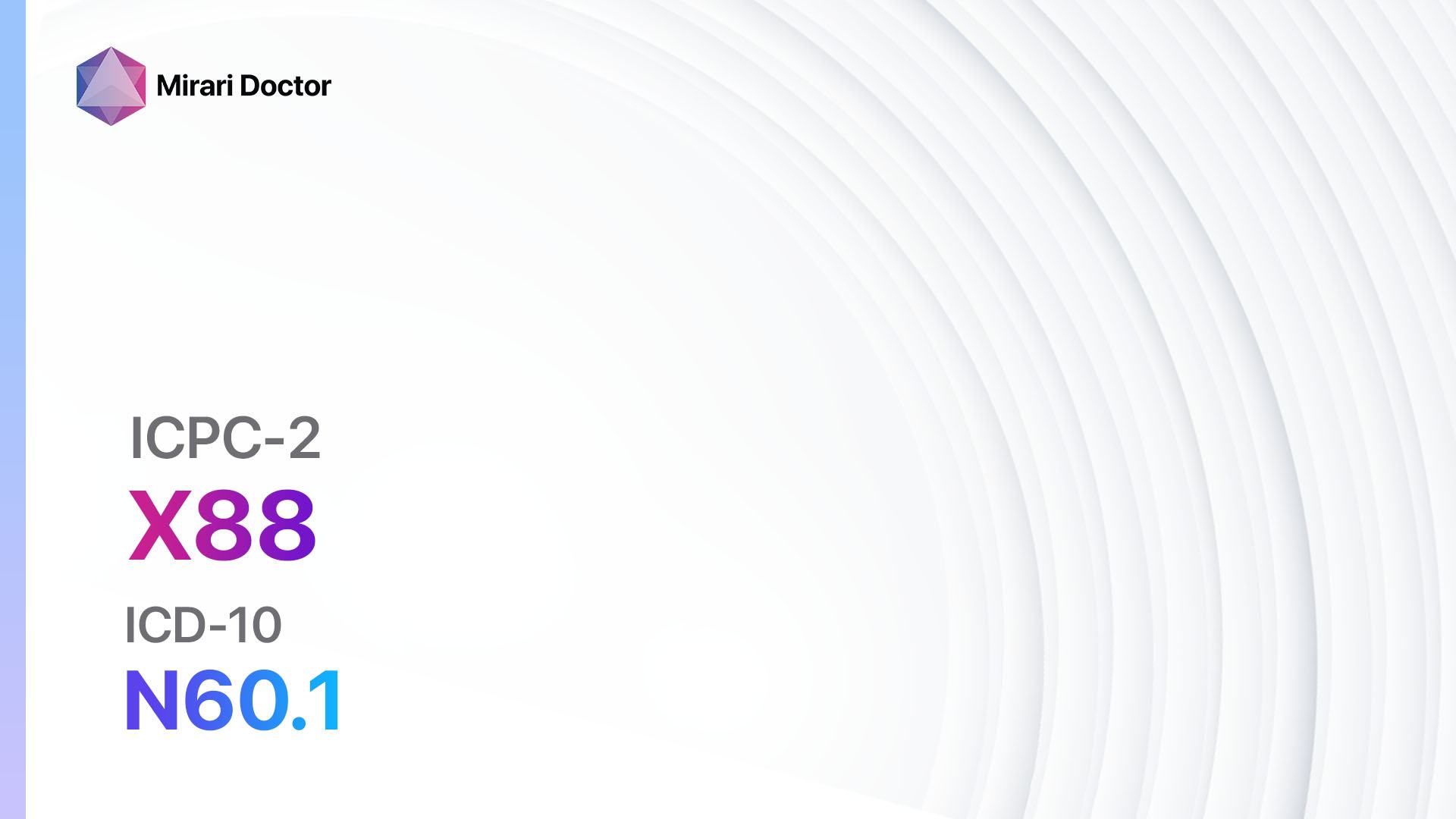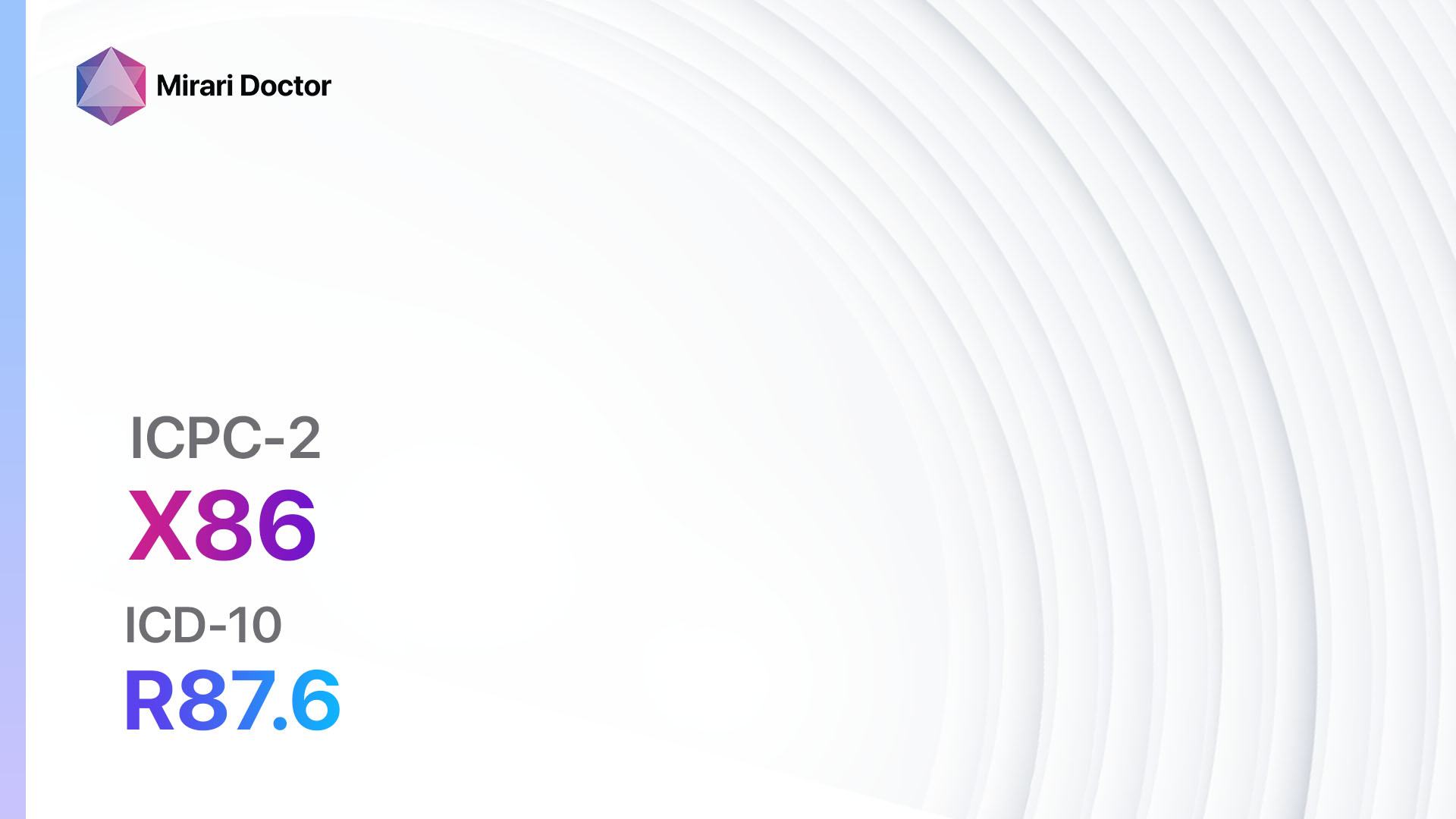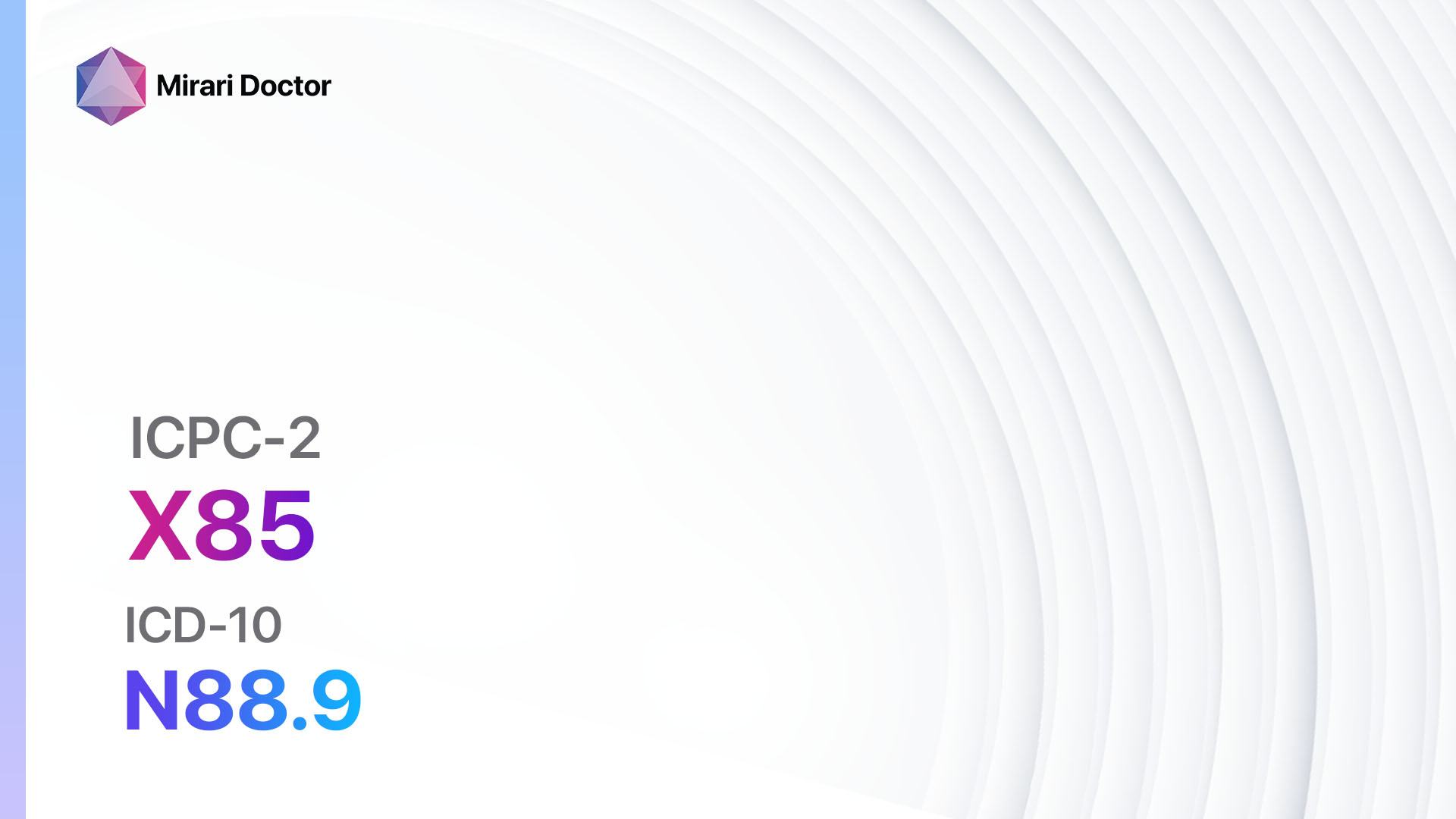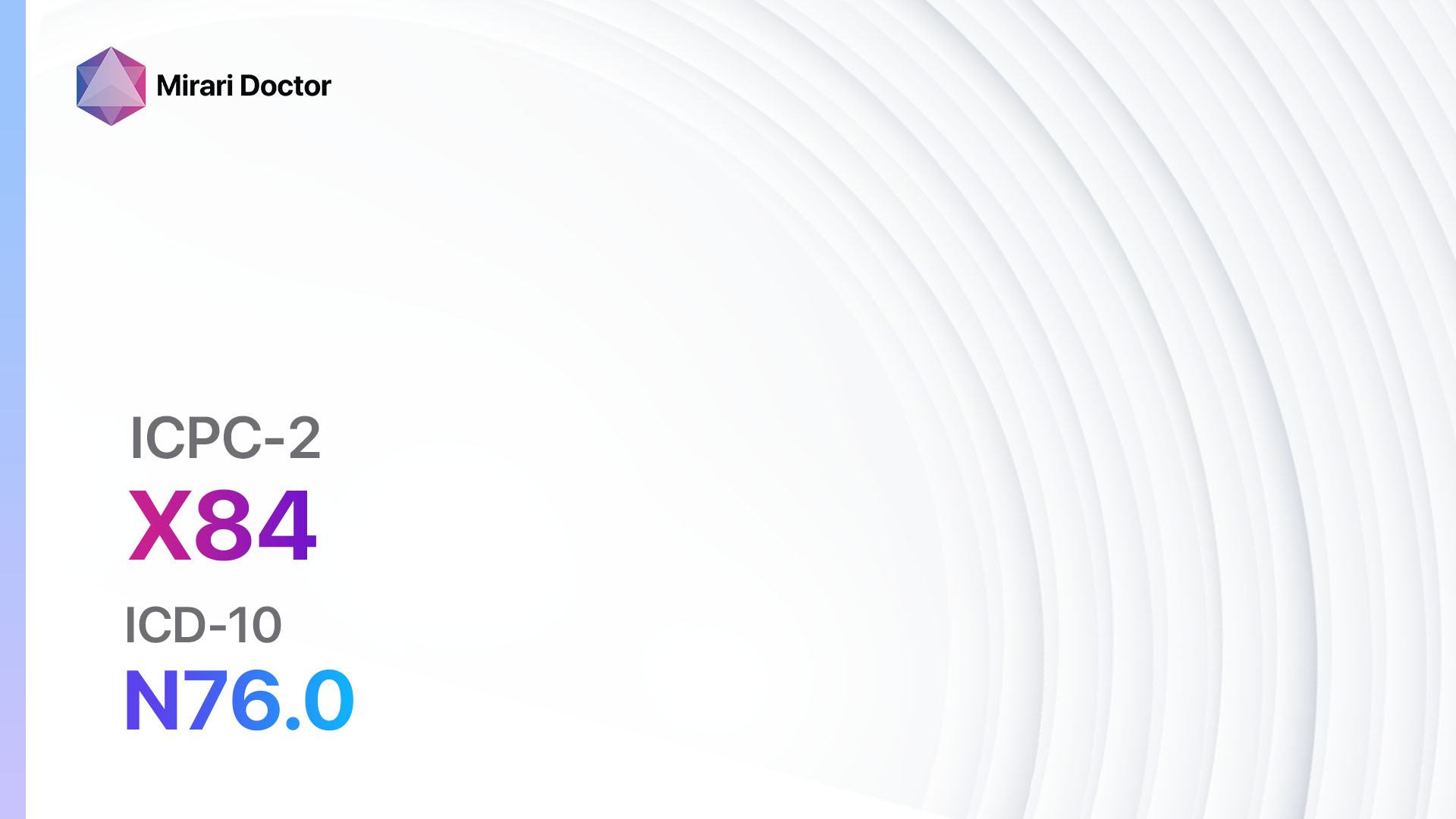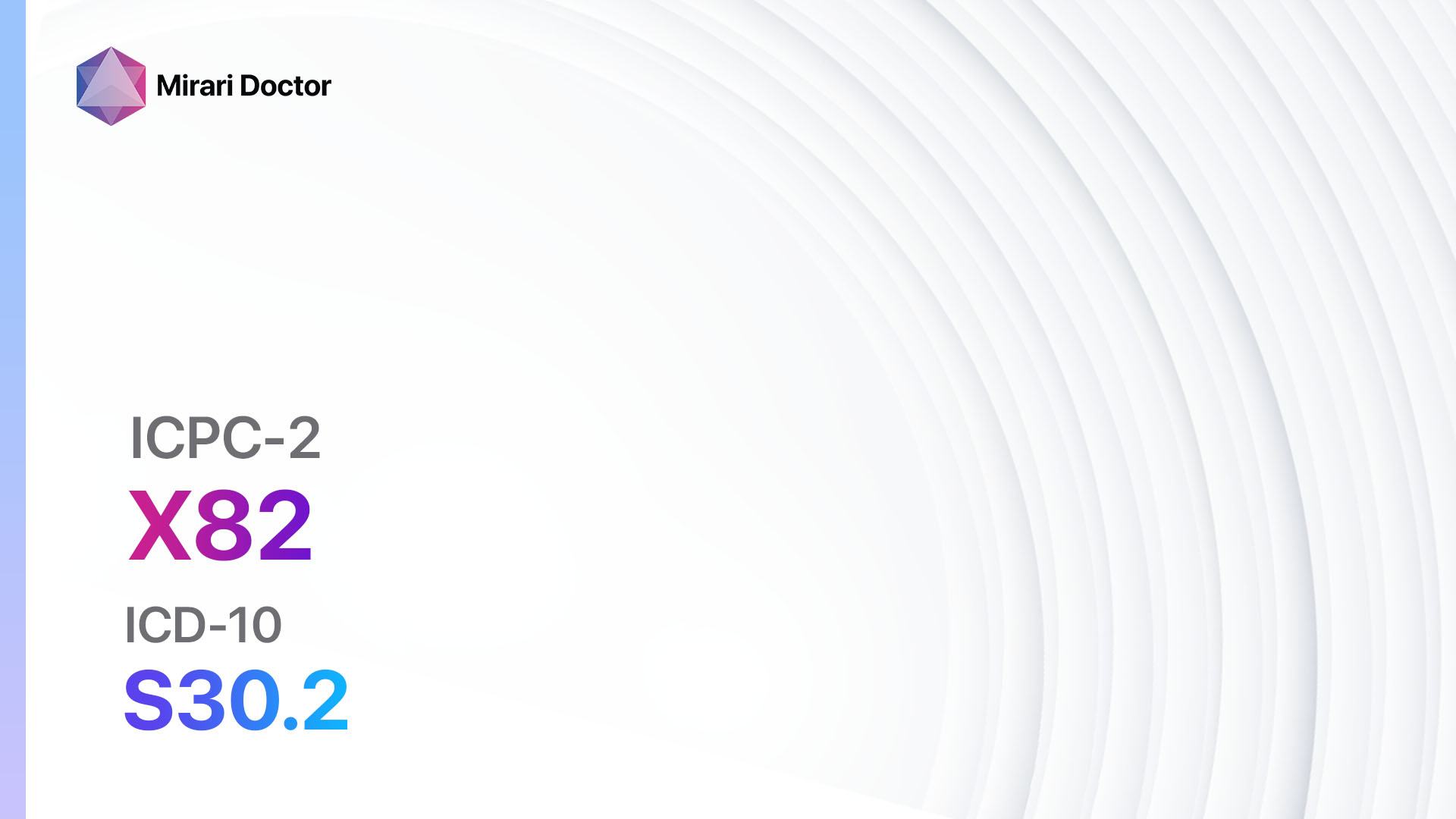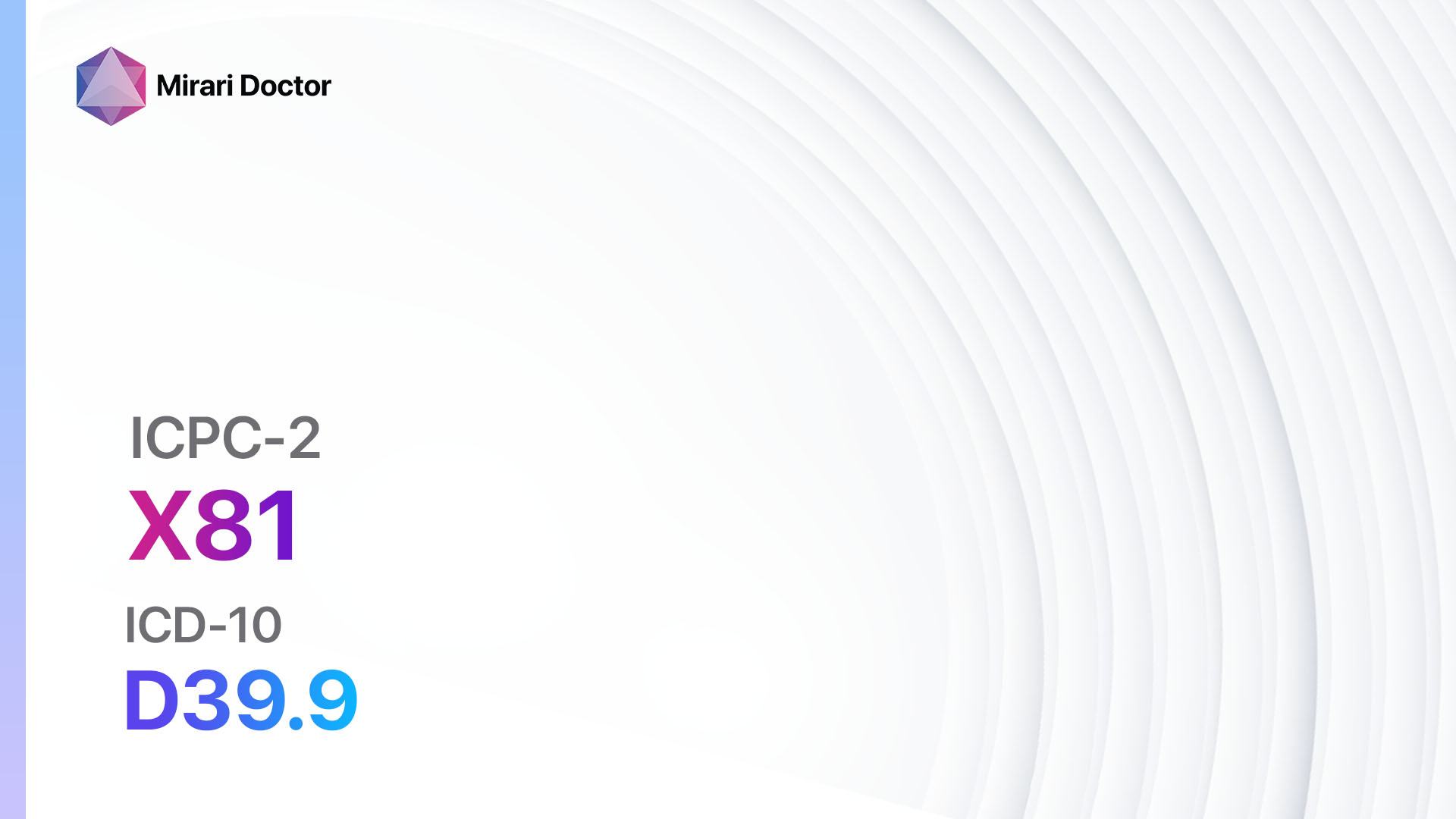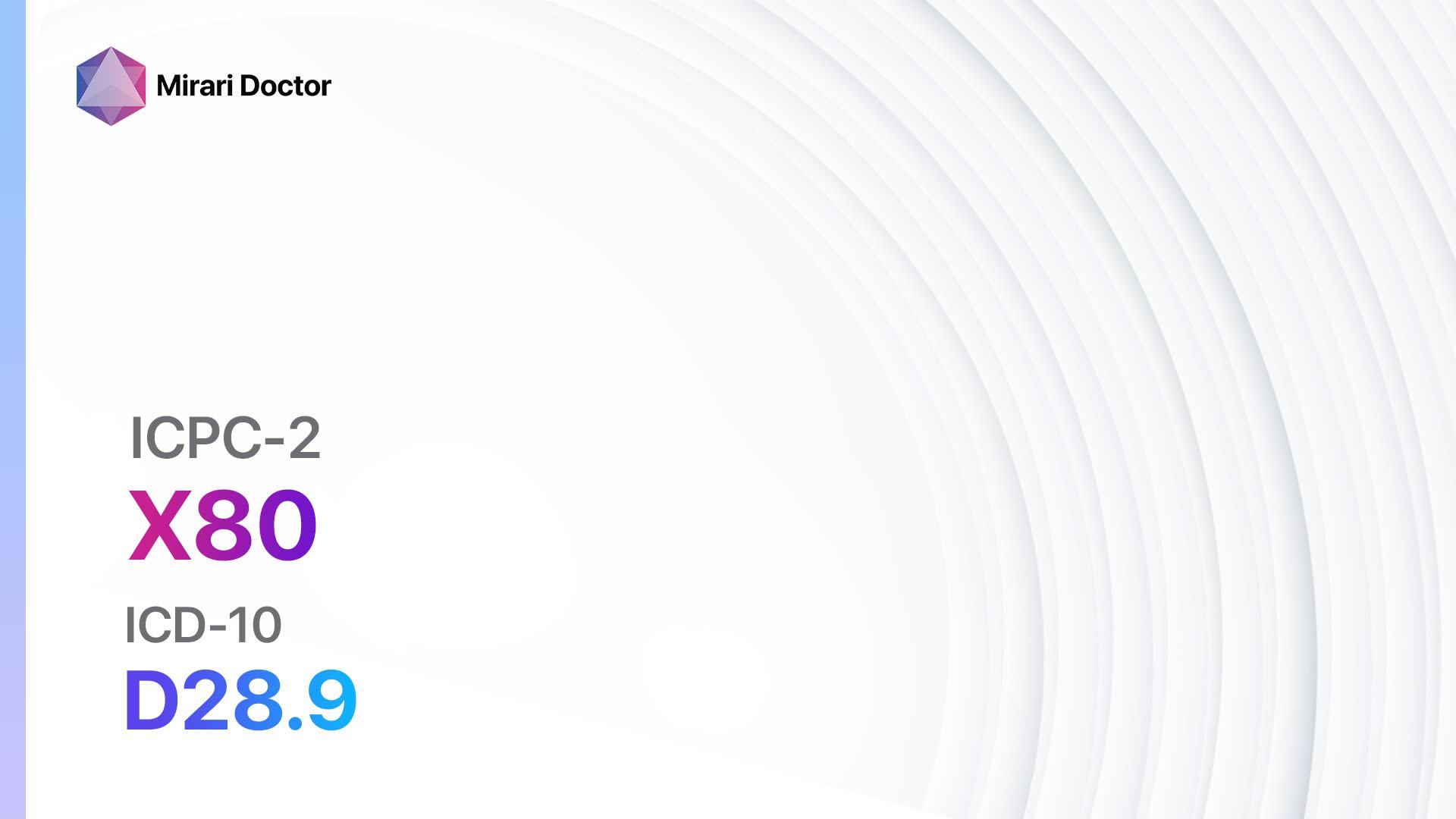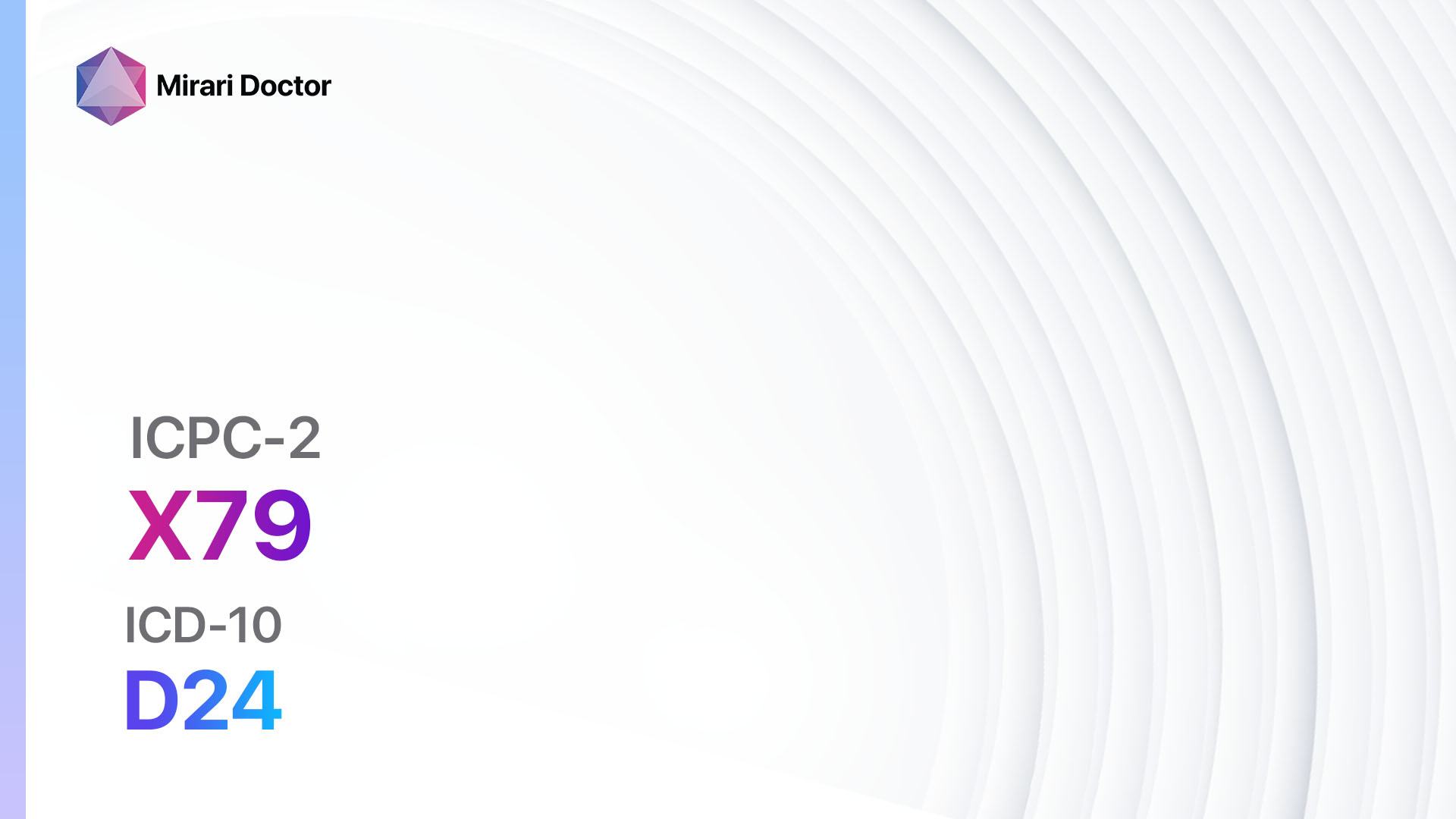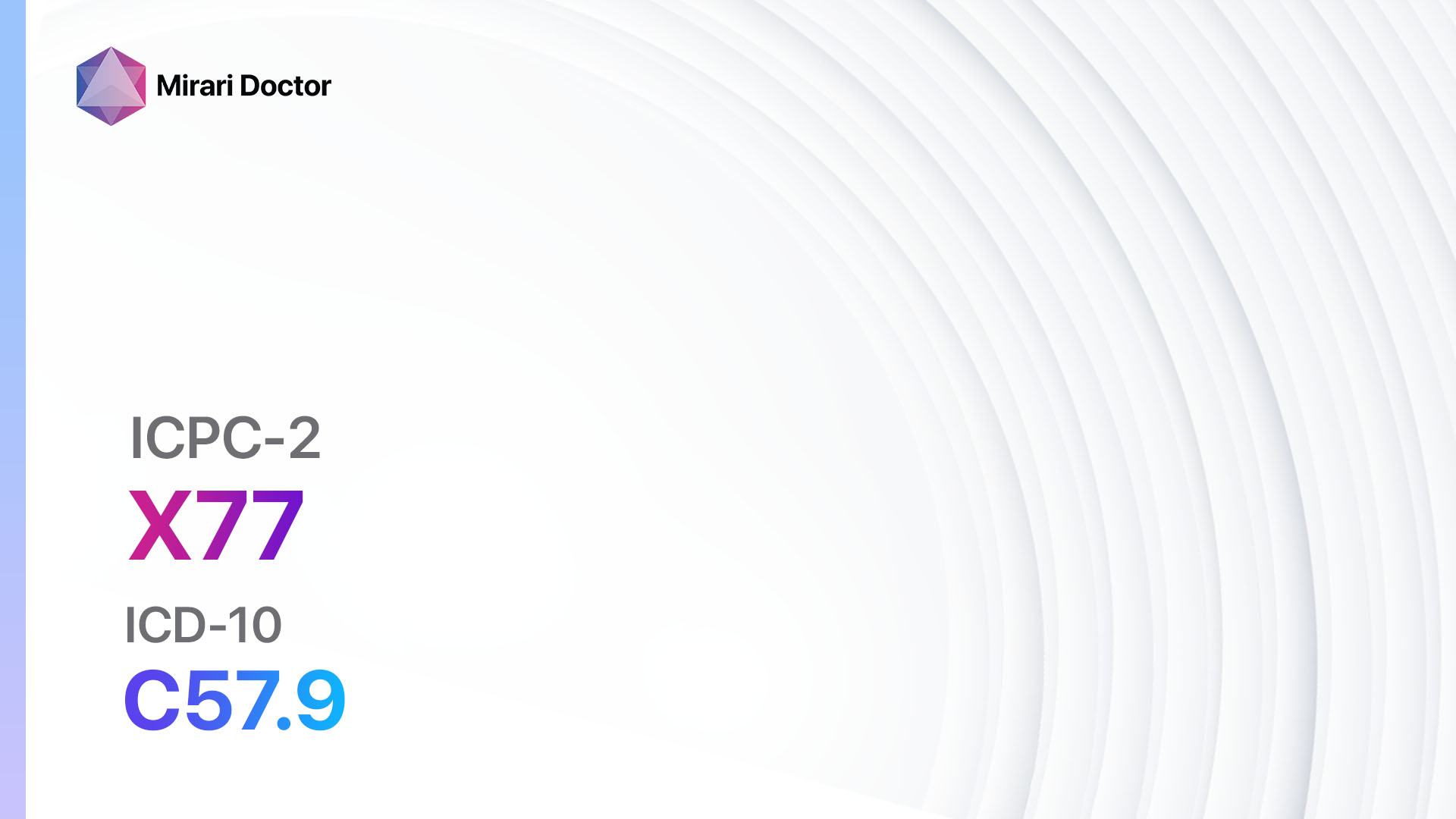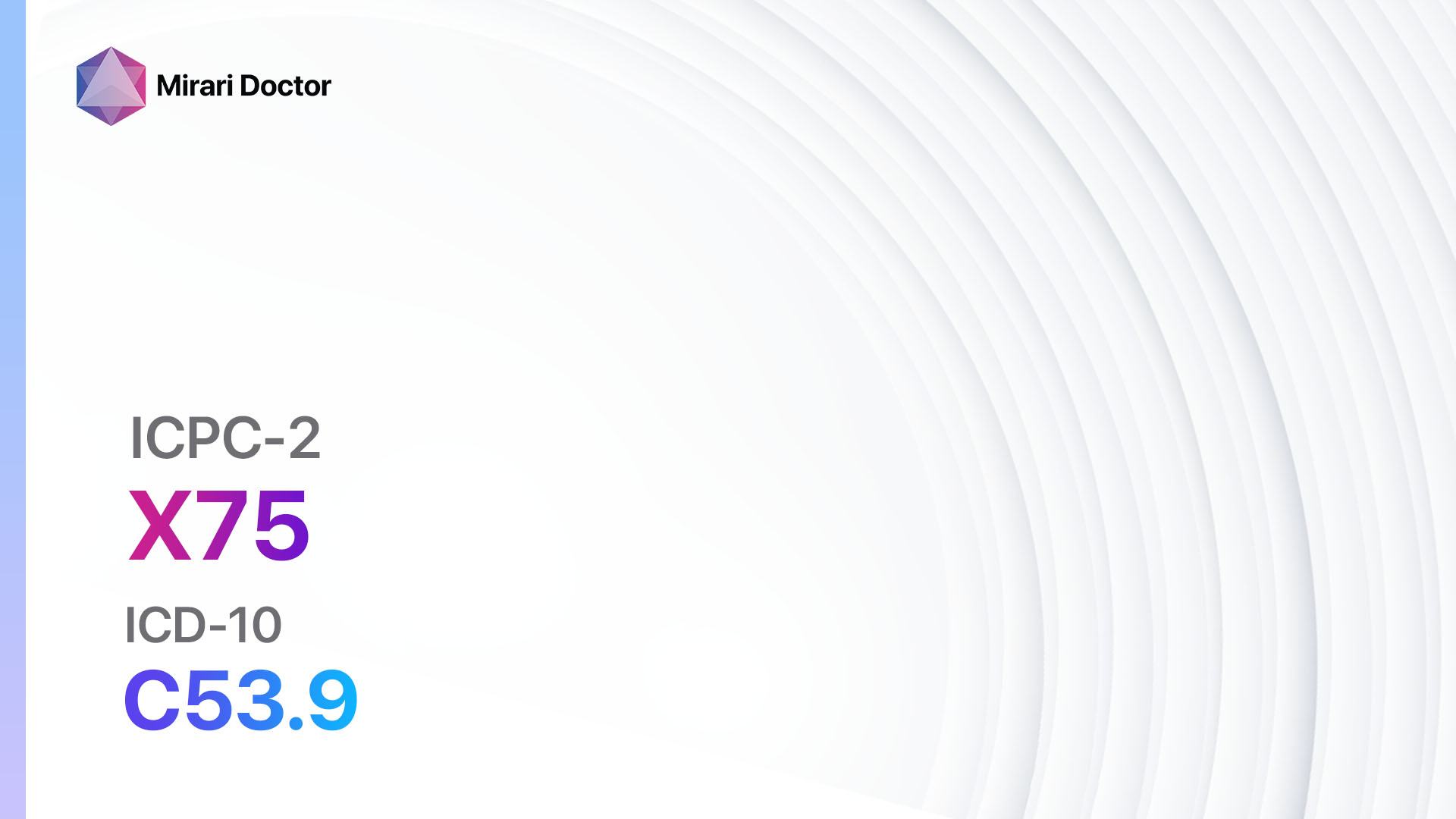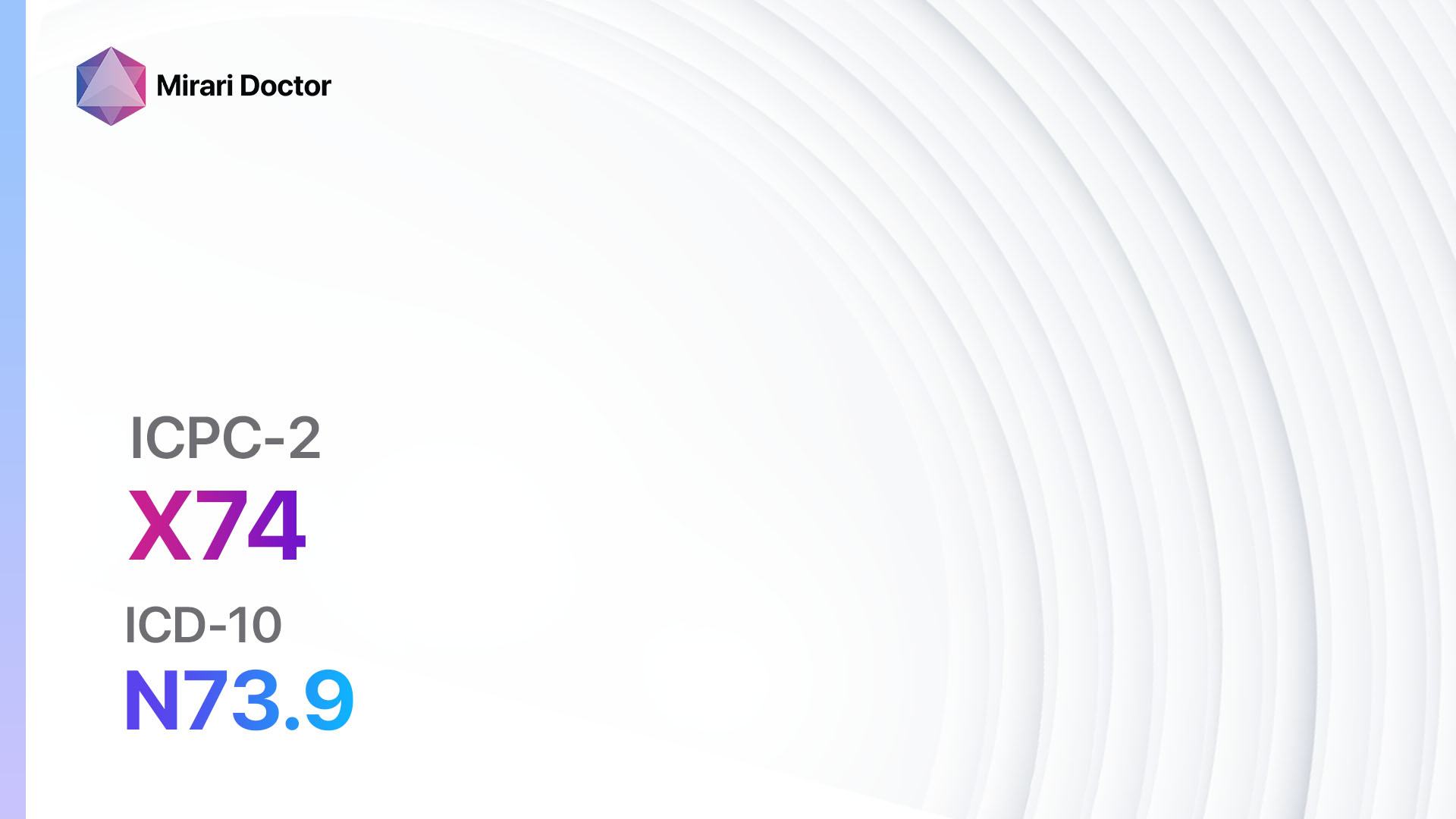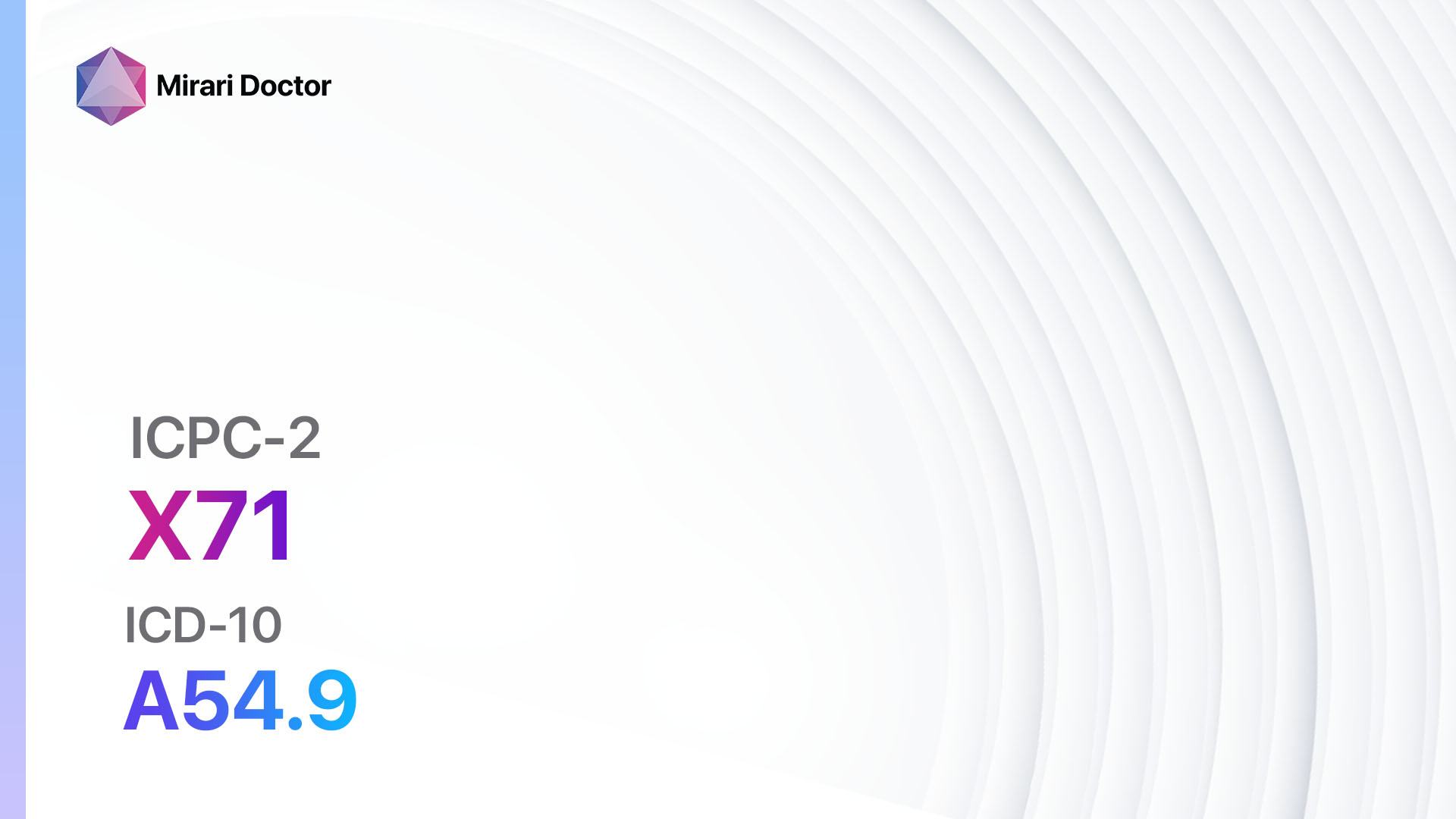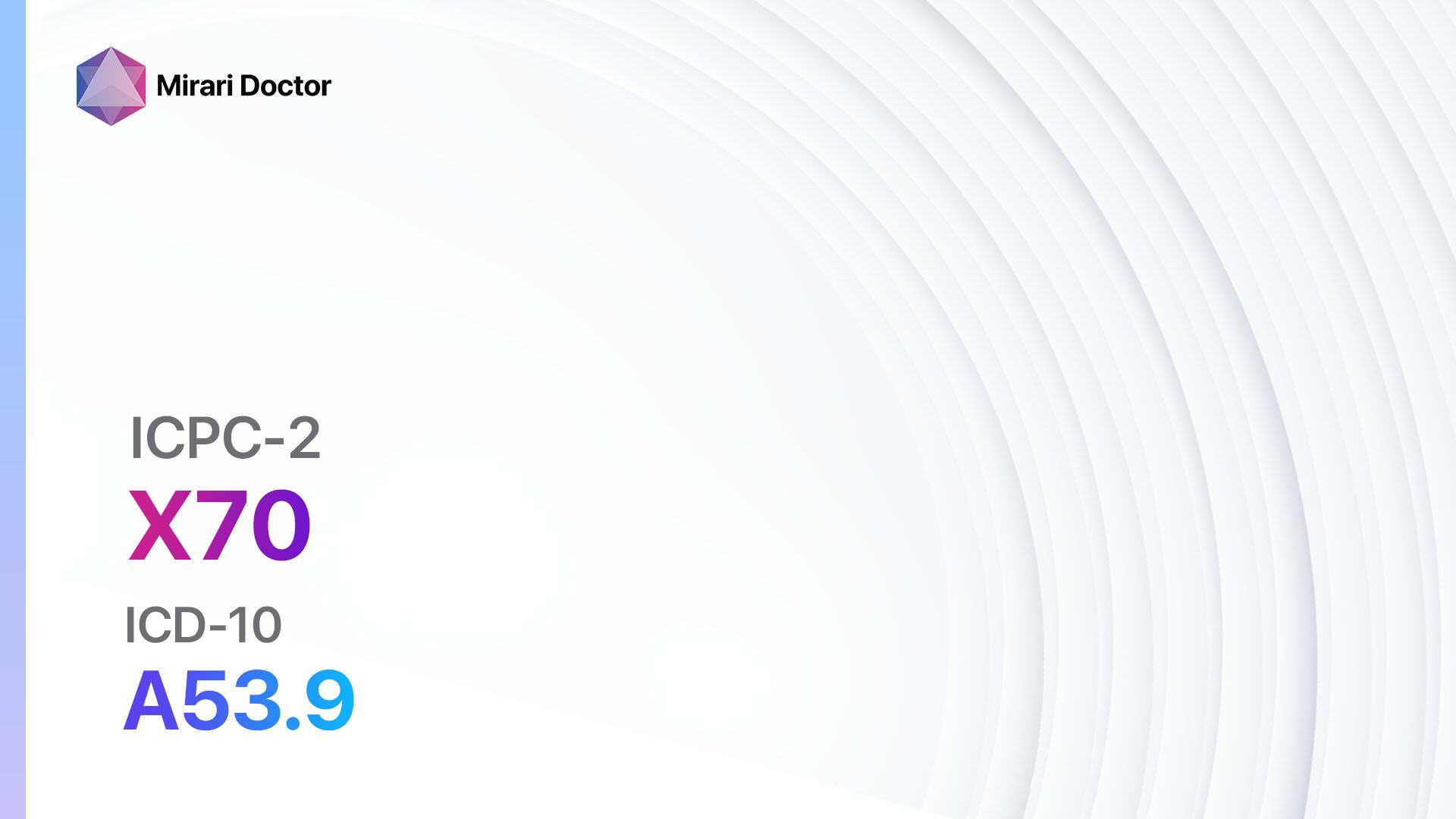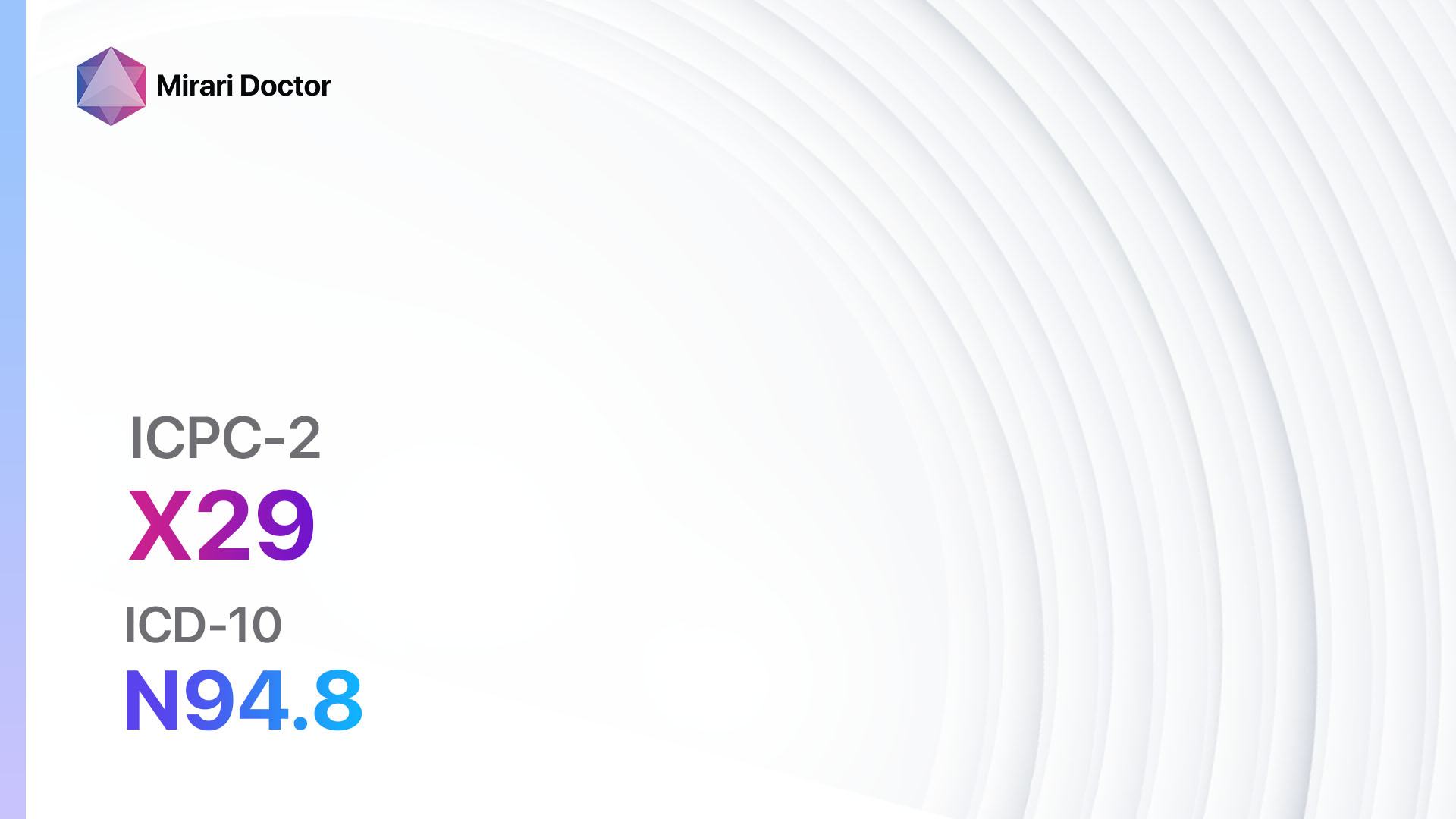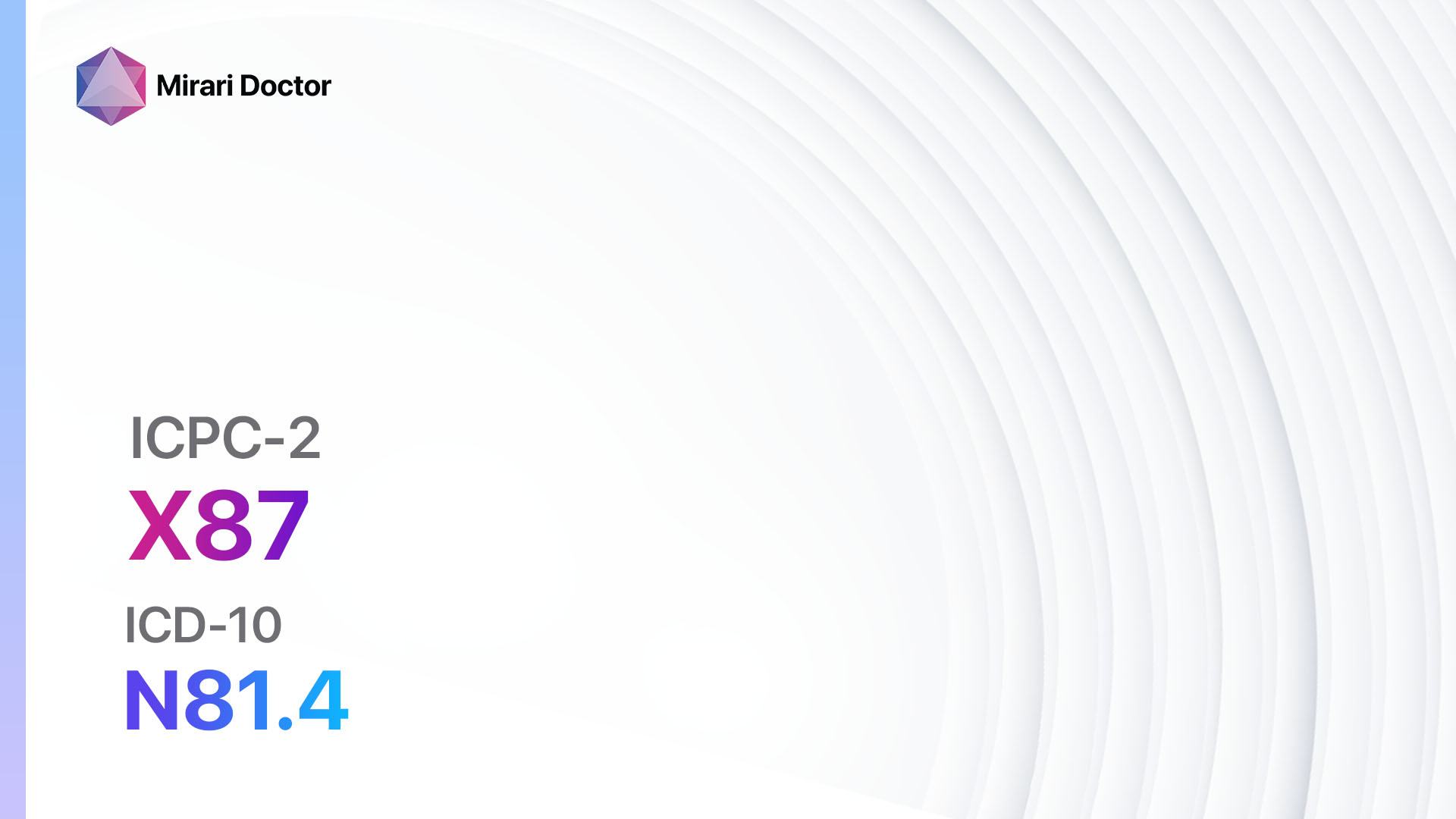
Introduction
Uterovaginal prolapse, also known as pelvic organ prolapse, is a condition where the pelvic organs, such as the uterus, bladder, or rectum, descend into or outside of the vaginal canal. This can occur due to weakened pelvic floor muscles and ligaments[1]. Uterovaginal prolapse can cause discomfort, urinary incontinence, and difficulty with bowel movements[2]. The aim of this guide is to provide a comprehensive overview of the symptoms, causes, diagnostic steps, possible interventions, and lifestyle interventions for uterovaginal prolapse.
Codes
Symptoms
- Vaginal bulging or protrusion
- Sensation of heaviness or pressure in the pelvis
- Urinary incontinence or frequent urination
- Difficulty with bowel movements
- Pain or discomfort during sexual intercourse
- Lower back pain or pelvic pain[3]
Causes
- Weakened pelvic floor muscles and ligaments due to childbirth
- Hormonal changes during menopause
- Chronic constipation or straining during bowel movements
- Chronic coughing or heavy lifting
- Genetic factors
- Connective tissue disorders[4]
Diagnostic Steps
Medical History
- Gather information about the patient’s symptoms, including the duration and severity
- Ask about any risk factors, such as previous childbirth or menopause
- Inquire about any medical conditions that may contribute to uterovaginal prolapse, such as chronic constipation or connective tissue disorders[5]
Physical Examination
- Perform a pelvic examination to assess the position of the pelvic organs
- Check for any vaginal bulging or protrusion
- Evaluate the strength of the pelvic floor muscles
- Assess for any signs of urinary incontinence or difficulty with bowel movements[6]
Laboratory Tests
- No specific laboratory tests are required for the diagnosis of uterovaginal prolapse
Diagnostic Imaging
- Imaging modalities, such as ultrasound or MRI, may be used to visualize the pelvic organs and assess the severity of the prolapse
- X-rays or CT scans may be used to evaluate the bony structures of the pelvis[7]
Other Tests
- Urodynamic testing may be performed to assess bladder function and rule out other causes of urinary incontinence
- Cystoscopy may be done to evaluate the bladder and urethra for any abnormalities[8]
Follow-up and Patient Education
- Schedule regular follow-up appointments to monitor the progression of the prolapse and assess the effectiveness of interventions
- Provide education to the patient about pelvic floor exercises, lifestyle modifications, and potential surgical options[9][10]
Possible Interventions
Traditional Interventions
Medications:
Top 5 drugs for Uterovaginal prolapse:
- Estrogen therapy:
- Cost: Varies depending on the formulation and insurance coverage.
- Contraindications: History of breast cancer, blood clots, or liver disease.
- Side effects: Breast tenderness, nausea, vaginal bleeding.
- Severe side effects: Increased risk of breast cancer, blood clots, stroke.
- Drug interactions: Certain medications may decrease the effectiveness of estrogen therapy.
- Warning: Regular monitoring of breast health and hormone levels is recommended.
- Anticholinergic medications (e.g., Oxybutynin, Tolterodine):
- Cost: Generic versions can be $10-$50/month.
- Contraindications: Urinary retention, gastric retention, uncontrolled narrow-angle glaucoma.
- Side effects: Dry mouth, constipation, blurred vision.
- Severe side effects: Urinary retention, confusion, hallucinations.
- Drug interactions: Other anticholinergic medications, certain antidepressants.
- Warning: Use with caution in elderly patients due to increased risk of side effects.
- Progestin therapy:
- Cost: Varies depending on the formulation and insurance coverage.
- Contraindications: History of blood clots, liver disease, or breast cancer.
- Side effects: Breast tenderness, mood changes, irregular bleeding.
- Severe side effects: Increased risk of blood clots, stroke, breast cancer.
- Drug interactions: Certain medications may decrease the effectiveness of progestin therapy.
- Warning: Regular monitoring of breast health and hormone levels is recommended.
- Muscle relaxants (e.g., Baclofen, Cyclobenzaprine):
- Cost: Generic versions can be $10-$50/month.
- Contraindications: Hypersensitivity, liver disease, certain heart conditions.
- Side effects: Drowsiness, dizziness, dry mouth.
- Severe side effects: Severe allergic reactions, hallucinations, seizures.
- Drug interactions: Other sedating medications, certain antidepressants.
- Warning: Avoid alcohol and activities requiring mental alertness while taking muscle relaxants.
- Pain medications (e.g., Acetaminophen, Ibuprofen):
- Cost: Generic versions can be $3-$20/month.
- Contraindications: Allergy to nonsteroidal anti-inflammatory drugs (NSAIDs), certain medical conditions (e.g., kidney disease, stomach ulcers).
- Side effects: Upset stomach, dizziness, rash.
- Severe side effects: Stomach bleeding, liver damage, allergic reactions.
- Drug interactions: Other NSAIDs, blood thinners.
- Warning: Use with caution in patients with kidney or liver disease.
Alternative Drugs:
- Selective estrogen receptor modulators (e.g., Raloxifene): May be used as an alternative to estrogen therapy for postmenopausal women.
- Alpha-adrenergic agonists (e.g., Phenylephrine): Can help improve muscle tone in the pelvic floor.
- Botulinum toxin injections: May be used to relax overactive pelvic floor muscles.
Surgical Procedures:
- Vaginal pessary: A device inserted into the vagina to support the pelvic organs. Cost: $50-$200.
- Colpocleisis: Surgical closure of the vaginal canal to provide support for the pelvic organs. Cost: $5,000-$10,000.
- Sacrocolpopexy: Surgical procedure to attach the top of the vagina to the sacrum using mesh or sutures. Cost: $10,000-$20,000.
- Hysterectomy: Surgical removal of the uterus. Cost: $8,000-$15,000.
- Anterior and/or posterior repair: Surgical repair of the front (anterior) and/or back (posterior) vaginal walls. Cost: $5,000-$10,000.
Alternative Interventions
- Pelvic floor physical therapy: Exercises and techniques to strengthen the pelvic floor muscles. Cost: $100-$200 per session.
- Biofeedback: Using sensors to provide visual or auditory feedback on pelvic floor muscle contractions. Cost: $100-$200 per session.
- Acupuncture: May help improve pelvic floor muscle function and reduce pain. Cost: $60-$120 per session.
- Vaginal weights: Devices inserted into the vagina to help strengthen the pelvic floor muscles. Cost: $20-$50.
- Lifestyle modifications: Including weight loss, smoking cessation, and avoiding heavy lifting or straining during bowel movements.
Lifestyle Interventions
- Pelvic floor exercises (Kegel exercises): Strengthening the pelvic floor muscles through regular exercises. Cost: Free.
- Weight loss: Losing excess weight can reduce pressure on the pelvic floor. Cost: Varies depending on the chosen weight loss method.
- Smoking cessation: Smoking can contribute to chronic coughing, which can worsen uterovaginal prolapse. Cost: Varies depending on the chosen smoking cessation method.
- Dietary modifications: Including a high-fiber diet to prevent constipation and reduce straining during bowel movements. Cost: Varies depending on food choices.
- Avoiding heavy lifting or straining: Preventing activities that can put excessive pressure on the pelvic floor. Cost: Free.
It is important to note that the cost ranges provided are approximate and may vary depending on the location and availability of the interventions. It is recommended to consult with a healthcare professional for personalized treatment options and cost estimates.
Mirari Cold Plasma Alternative Intervention
Understanding Mirari Cold Plasma
- Safe and Non-Invasive Treatment: Mirari Cold Plasma is a safe and non-invasive treatment option for various skin conditions. It does not require incisions, minimizing the risk of scarring, bleeding, or tissue damage.
- Efficient Extraction of Foreign Bodies: Mirari Cold Plasma facilitates the removal of foreign bodies from the skin by degrading and dissociating organic matter, allowing easier access and extraction.
- Pain Reduction and Comfort: Mirari Cold Plasma has a local analgesic effect, providing pain relief during the treatment, making it more comfortable for the patient.
- Reduced Risk of Infection: Mirari Cold Plasma has antimicrobial properties, effectively killing bacteria and reducing the risk of infection.
- Accelerated Healing and Minimal Scarring: Mirari Cold Plasma stimulates wound healing and tissue regeneration, reducing healing time and minimizing the formation of scars.
Mirari Cold Plasma Prescription
Video instructions for using Mirari Cold Plasma Device – X87 Uterovaginal prolapse (ICD-10:N81.4)
| Mild | Moderate | Severe |
| Mode setting: 1 (Infection) Location: 2 (Prostate & Uterus) Morning: 15 minutes, Evening: 15 minutes |
Mode setting: 1 (Infection) Location: 2 (Prostate & Uterus) Morning: 30 minutes, Lunch: 30 minutes, Evening: 30 minutes |
Mode setting: 1 (Infection) Location: 2 (Prostate & Uterus) Morning: 30 minutes, Lunch: 30 minutes, Evening: 30 minutes |
| Mode setting: 2 (Wound Healing) Location: 2 (Prostate & Uterus) Morning: 15 minutes, Evening: 15 minutes |
Mode setting: 2 (Wound Healing) Location: 2 (Prostate & Uterus) Morning: 30 minutes, Lunch: 30 minutes, Evening: 30 minutes |
Mode setting: 2 (Wound Healing) Location: 2 (Prostate & Uterus) Morning: 30 minutes, Lunch: 30 minutes, Evening: 30 minutes |
| Mode setting: 3 (Antiviral Therapy) Location: 0 (Localized) Morning: 15 minutes, Evening: 15 minutes |
Mode setting: 3 (Antiviral Therapy) Location: 0 (Localized) Morning: 30 minutes, Lunch: 30 minutes, Evening: 30 minutes |
Mode setting: 3 (Antiviral Therapy) Location: 0 (Localized) Morning: 30 minutes, Lunch: 30 minutes, Evening: 30 minutes |
| Mode setting: 7 (Immunotherapy) Location: 1 (Sacrum) Morning: 15 minutes, Evening: 15 minutes |
Mode setting: 7 (Immunotherapy) Location: 1 (Sacrum) Morning: 30 minutes, Lunch: 30 minutes, Evening: 30 minutes |
Mode setting: 7 (Immunotherapy) Location: 1 (Sacrum) Morning: 30 minutes, Lunch: 30 minutes, Evening: 30 minutes |
| Total Morning: 60 minutes approx. $10 USD, Evening: 60 minutes approx. $10 USD |
Total Morning: 120 minutes approx. $20 USD, Lunch: 120 minutes approx. $20 USD, Evening: 120 minutes approx. $20 USD, |
Total Morning: 120 minutes approx. $20 USD, Lunch: 120 minutes approx. $20 USD, Evening: 120 minutes approx. $20 USD, |
| Usual treatment for 7-60 days approx. $140 USD – $1200 USD | Usual treatment for 6-8 weeks approx. $2,520 USD – $3,360 USD |
Usual treatment for 3-6 months approx. $5,400 USD – $10,800 USD
|
 |
|
Use the Mirari Cold Plasma device to treat Uterovaginal prolapse effectively.
WARNING: MIRARI COLD PLASMA IS DESIGNED FOR THE HUMAN BODY WITHOUT ANY ARTIFICIAL OR THIRD PARTY PRODUCTS. USE OF OTHER PRODUCTS IN COMBINATION WITH MIRARI COLD PLASMA MAY CAUSE UNPREDICTABLE EFFECTS, HARM OR INJURY. PLEASE CONSULT A MEDICAL PROFESSIONAL BEFORE COMBINING ANY OTHER PRODUCTS WITH USE OF MIRARI.
Step 1: Cleanse the Skin
- Start by cleaning the affected area of the skin with a gentle cleanser or mild soap and water. Gently pat the area dry with a clean towel.
Step 2: Prepare the Mirari Cold Plasma device
- Ensure that the Mirari Cold Plasma device is fully charged or has fresh batteries as per the manufacturer’s instructions. Make sure the device is clean and in good working condition.
- Switch on the Mirari device using the power button or by following the specific instructions provided with the device.
- Some Mirari devices may have adjustable settings for intensity or treatment duration. Follow the manufacturer’s instructions to select the appropriate settings based on your needs and the recommended guidelines.
Step 3: Apply the Device
- Place the Mirari device in direct contact with the affected area of the skin. Gently glide or hold the device over the skin surface, ensuring even coverage of the area experiencing.
- Slowly move the Mirari device in a circular motion or follow a specific pattern as indicated in the user manual. This helps ensure thorough treatment coverage.
Step 4: Monitor and Assess:
- Keep track of your progress and evaluate the effectiveness of the Mirari device in managing your Uterovaginal prolapse. If you have any concerns or notice any adverse reactions, consult with your health care professional.
Note
This guide is for informational purposes only and should not replace the advice of a medical professional. Always consult with your healthcare provider or a qualified medical professional for personal advice, diagnosis, or treatment. Do not solely rely on the information presented here for decisions about your health. Use of this information is at your own risk. The authors of this guide, nor any associated entities or platforms, are not responsible for any potential adverse effects or outcomes based on the content.
Mirari Cold Plasma System Disclaimer
- Purpose: The Mirari Cold Plasma System is a Class 2 medical device designed for use by trained healthcare professionals. It is registered for use in Thailand and Vietnam. It is not intended for use outside of these locations.
- Informational Use: The content and information provided with the device are for educational and informational purposes only. They are not a substitute for professional medical advice or care.
- Variable Outcomes: While the device is approved for specific uses, individual outcomes can differ. We do not assert or guarantee specific medical outcomes.
- Consultation: Prior to utilizing the device or making decisions based on its content, it is essential to consult with a Certified Mirari Tele-Therapist and your medical healthcare provider regarding specific protocols.
- Liability: By using this device, users are acknowledging and accepting all potential risks. Neither the manufacturer nor the distributor will be held accountable for any adverse reactions, injuries, or damages stemming from its use.
- Geographical Availability: This device has received approval for designated purposes by the Thai and Vietnam FDA. As of now, outside of Thailand and Vietnam, the Mirari Cold Plasma System is not available for purchase or use.
References
- Jelovsek JE, Maher C, Barber MD. Pelvic organ prolapse. Lancet. 2007;369(9566):1027-1038.
- Handa VL, Garrett E, Hendrix S, et al. Progression and remission of pelvic organ prolapse: a longitudinal study of menopausal women. Am J Obstet Gynecol. 2004;190(1):27-32.
- Bump RC, Norton PA. Epidemiology and natural history of pelvic floor dysfunction. Obstet Gynecol Clin North Am. 1998;25(4):723-746.
- Dietz HP. Pelvic floor trauma following vaginal delivery. Curr Opin Obstet Gynecol. 2006;18(5):528-537.
- Swift SE. The distribution of pelvic organ support in a population of female subjects seen for routine gynecologic health care. Am J Obstet Gynecol. 2000;183(2):277-285.
- Bump RC, Mattiasson A, Bø K, et al. The standardization of terminology of female pelvic organ prolapse and pelvic floor dysfunction. Am J Obstet Gynecol. 1996;175(1):10-17.
- Dietz HP. Ultrasound imaging of the pelvic floor. Part II: three-dimensional or volume imaging. Ultrasound Obstet Gynecol. 2004;23(6):615-625.
- Nygaard I, Barber MD, Burgio KL, et al. Prevalence of symptomatic pelvic floor disorders in US women. JAMA. 2008;300(11):1311-1316.
- Hagen S, Stark D, Glazener C, et al. Individualised pelvic floor muscle training in women with pelvic organ prolapse (POPPY): a multicentre randomised controlled trial. Lancet. 2014;383(9919):796-806.
- Maher C, Feiner B, Baessler K, Schmid C. Surgical management of pelvic organ prolapse in women. Cochrane Database Syst Rev. 2013;(4):CD004014.
Related articles
Made in USA



